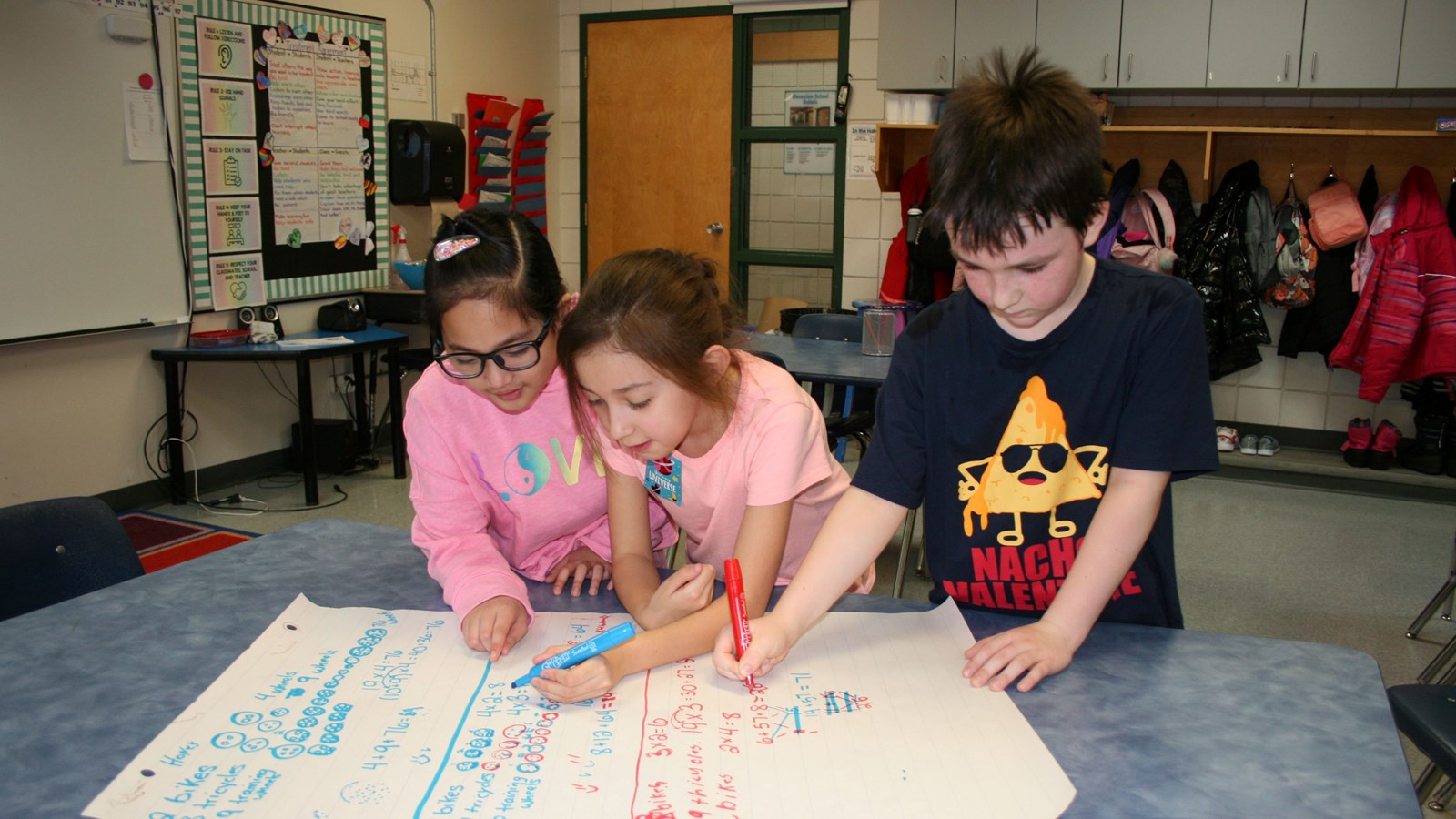Champlain creates collaborative math class
February 21, 2024 News Story
Math is as easy as 1, 2, 3 for students at Champlain School.
In room 211, Grades 3 and 4 students are working together in groups of three to tackle large open-ended math problems, employing each other’s unique strengths and strategies to expand their mathematical minds.
Grades 3 and 4 teacher Veronique Bedard said that collaborative spirit is improving math skills and creating a palpable excitement for problem-solving in her classroom.
“Last year, I was lucky enough to work with Stacey Stone, a Professional Support Services teacher, and one of my goals with her was I wanted to start focusing more on big questions with my students,” Bedard said.
“In the past, we often grouped students based on their ability and I felt like we were missing opportunities to have the students experience all parts of the curriculum. We started looking at how big problems can be approached in different ways. Some students might not perform well in a simple paper and pencil task, but they’re often out-of-the-box thinkers. They approach problems in interesting ways and support each other.”
“I had kids yesterday who begged to stay in for recess to finish their problem. The problem-solving part of it almost becomes contagious.”
Bedard said she and Numeracy Support teacher Catherine Siller were also inspired by Carole Fullerton, a B.C.-based numeracy consultant and author of such books as Good Questions and Mastering the Facts.
“We do lots of group work and look at lots of problems that have more than one answer,” Bedard said. “If we notice a group has figured it out quickly than we come by with a new challenge.”
“We do it all on chart paper. The rule is one marker per group, so the students have to talk to each other to solve the problem. Sometimes I’ll walk by and move the marker to a different hand. That way everyone is listening to each other and is part of the process.”
“We also do math congress, where the students bring their work forward and explain it to the class. The pace of our math lessons, there’s never a dull moment.”
Bedard and Siller also employ manipulatives, math-related stories and real-world math puzzles in their teaching. While correct answers are important, the emphasis is always on the process.
“A regular phrase you’ll hear here is, ‘I am a mathematician’,” Bedard said.
Champlain students Scarlett, Tryggve, and Elijah are three of those mathematicians in the making.
“It’s fun to do math. It challenges your brain,” said Tryggve.
“Challenging your brain is good for you. Sometimes it’s hard, but you can get through it,” Elijah said.
“Your brain is working out,” Scarlett said. “In our math challenge yesterday, some of us got the right answer and some of us got the wrong answer. But that doesn’t matter. What matters is the thinking you’re doing.”
“And if you don’t get it right the first time, you might get it right the second or third. Keep trying and never give up.”


